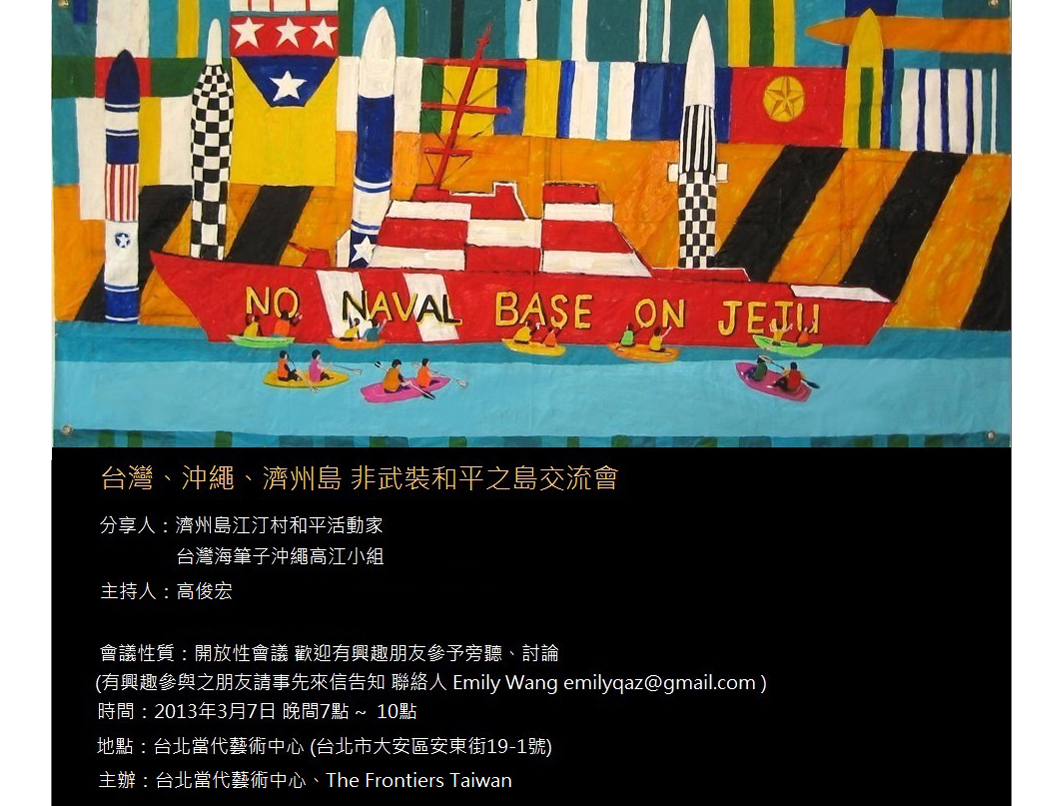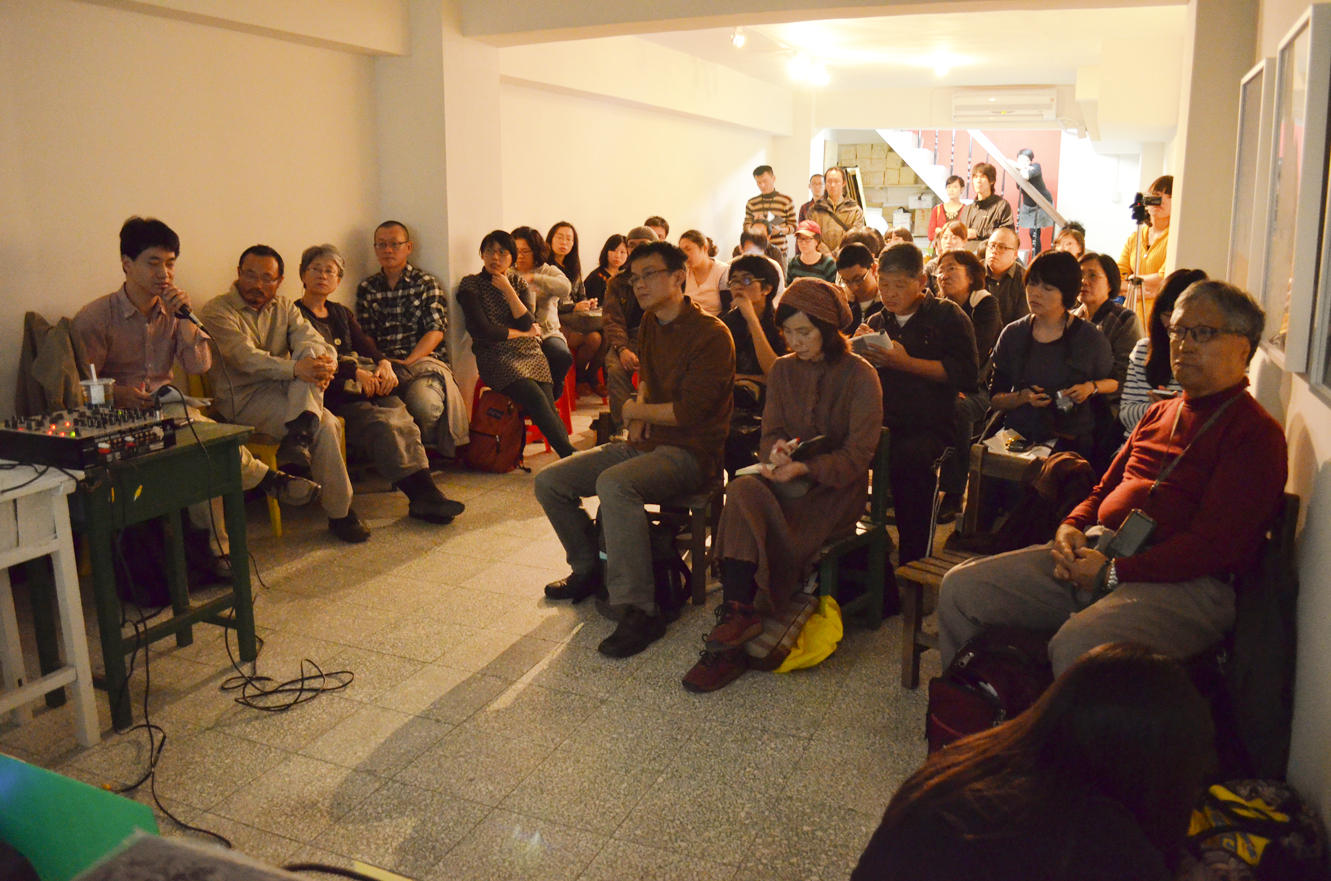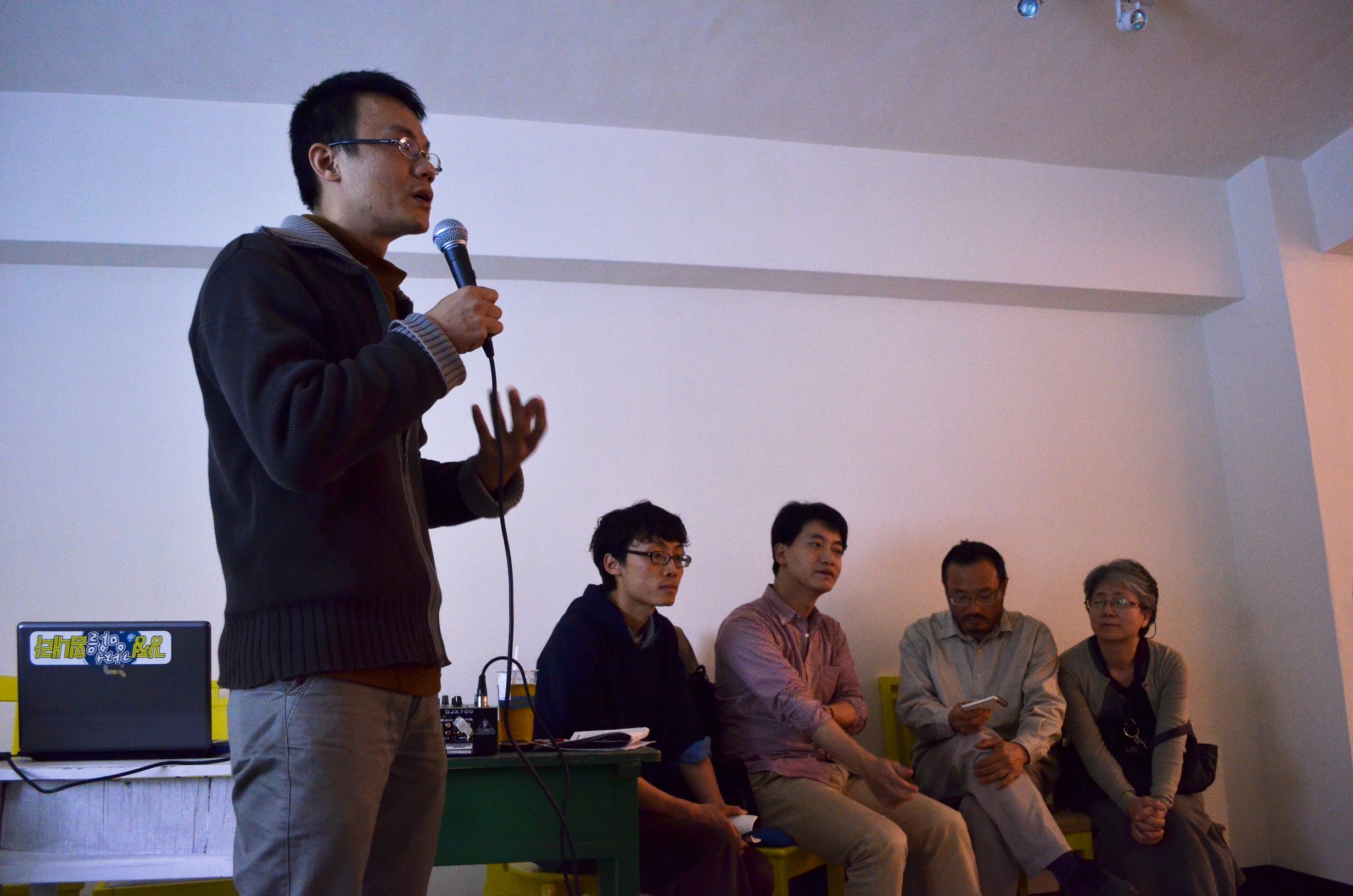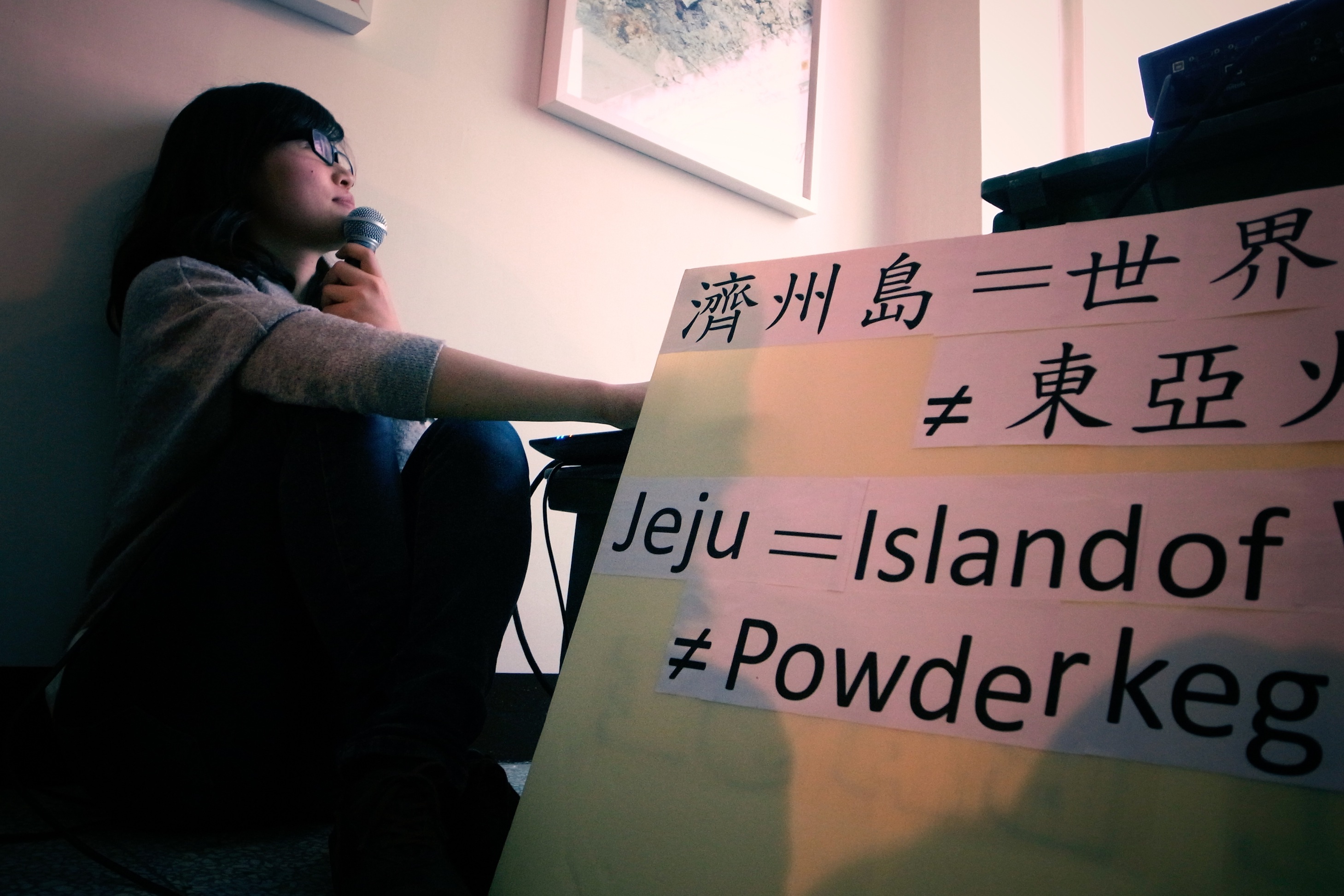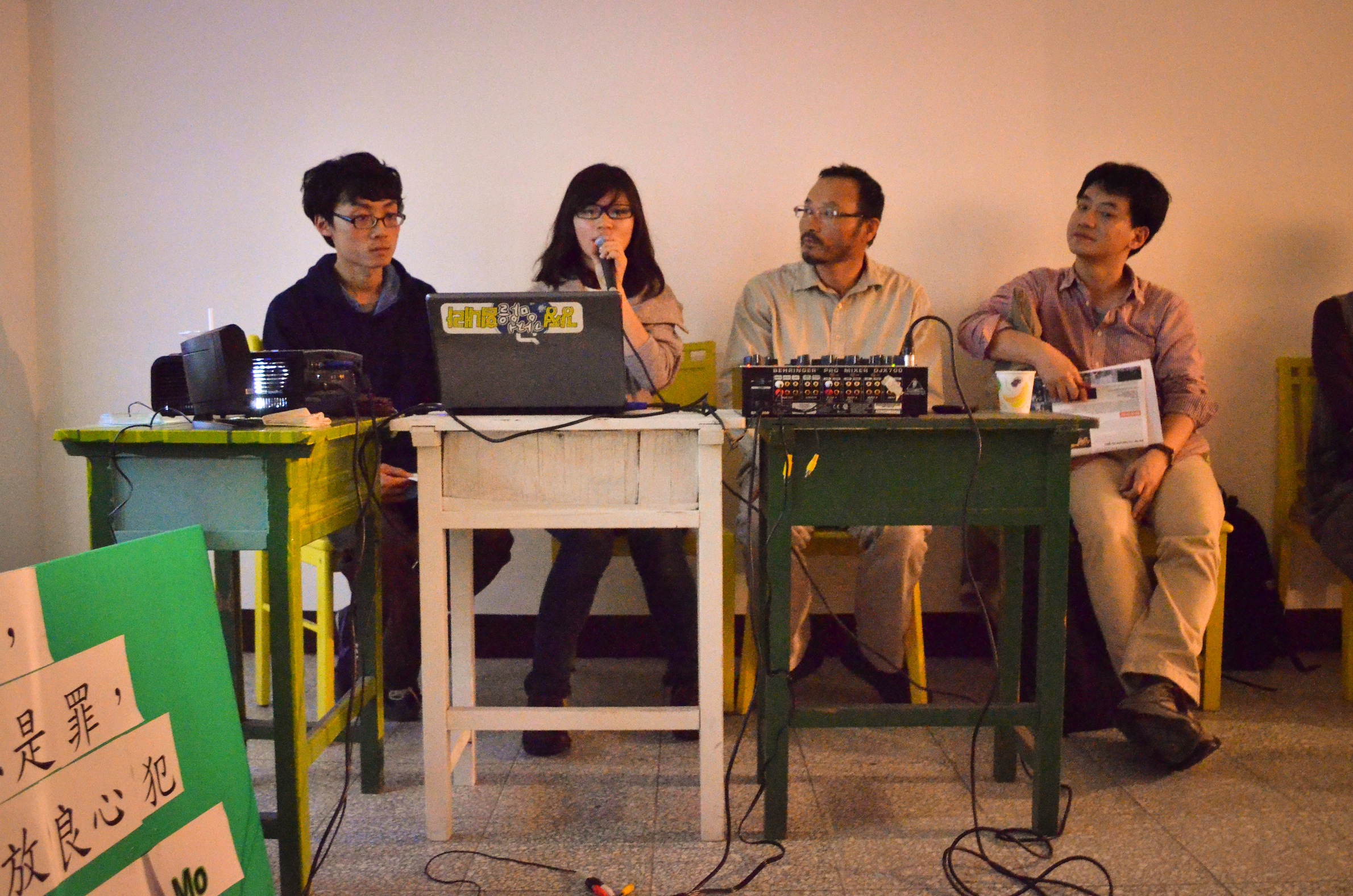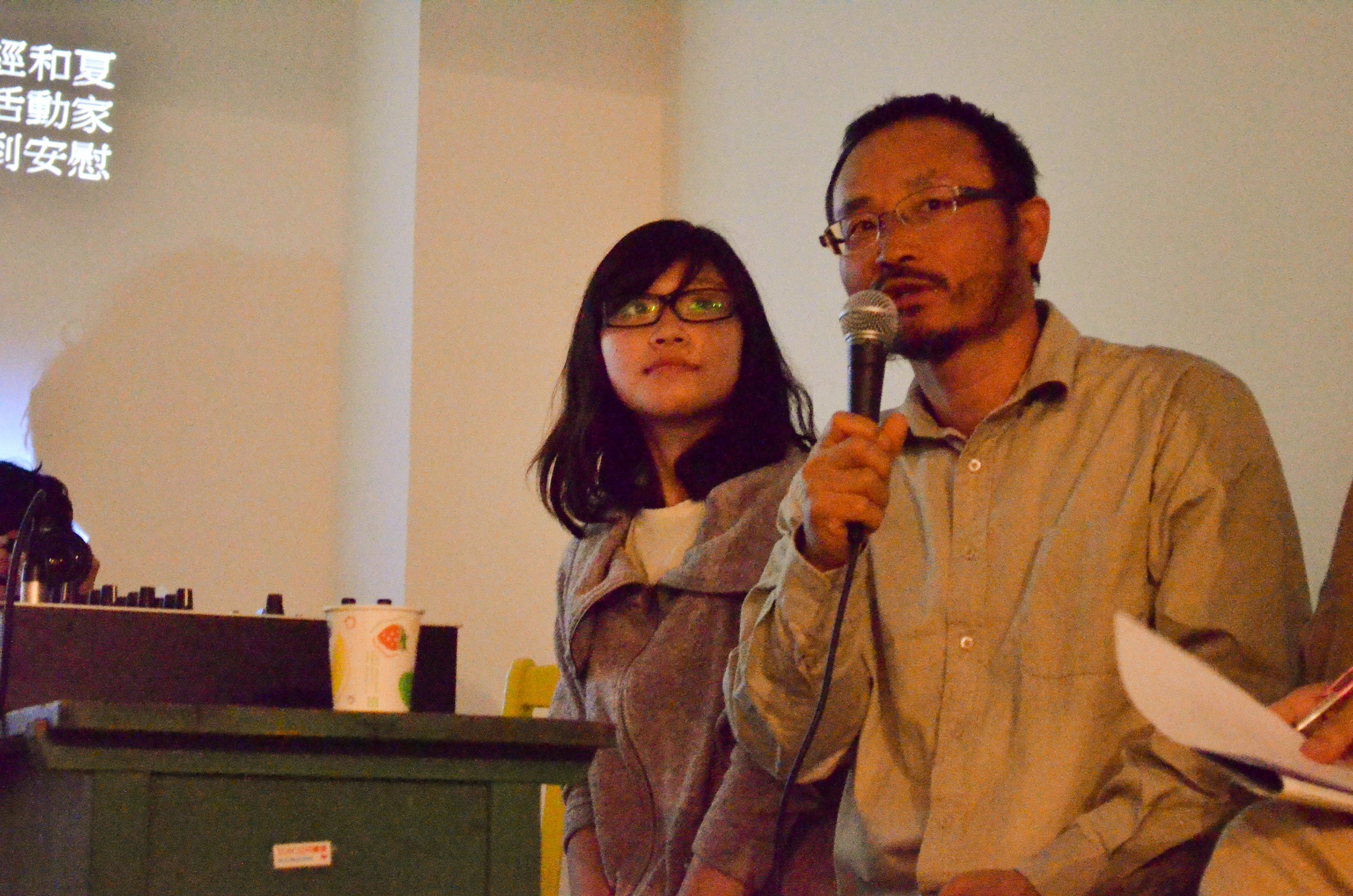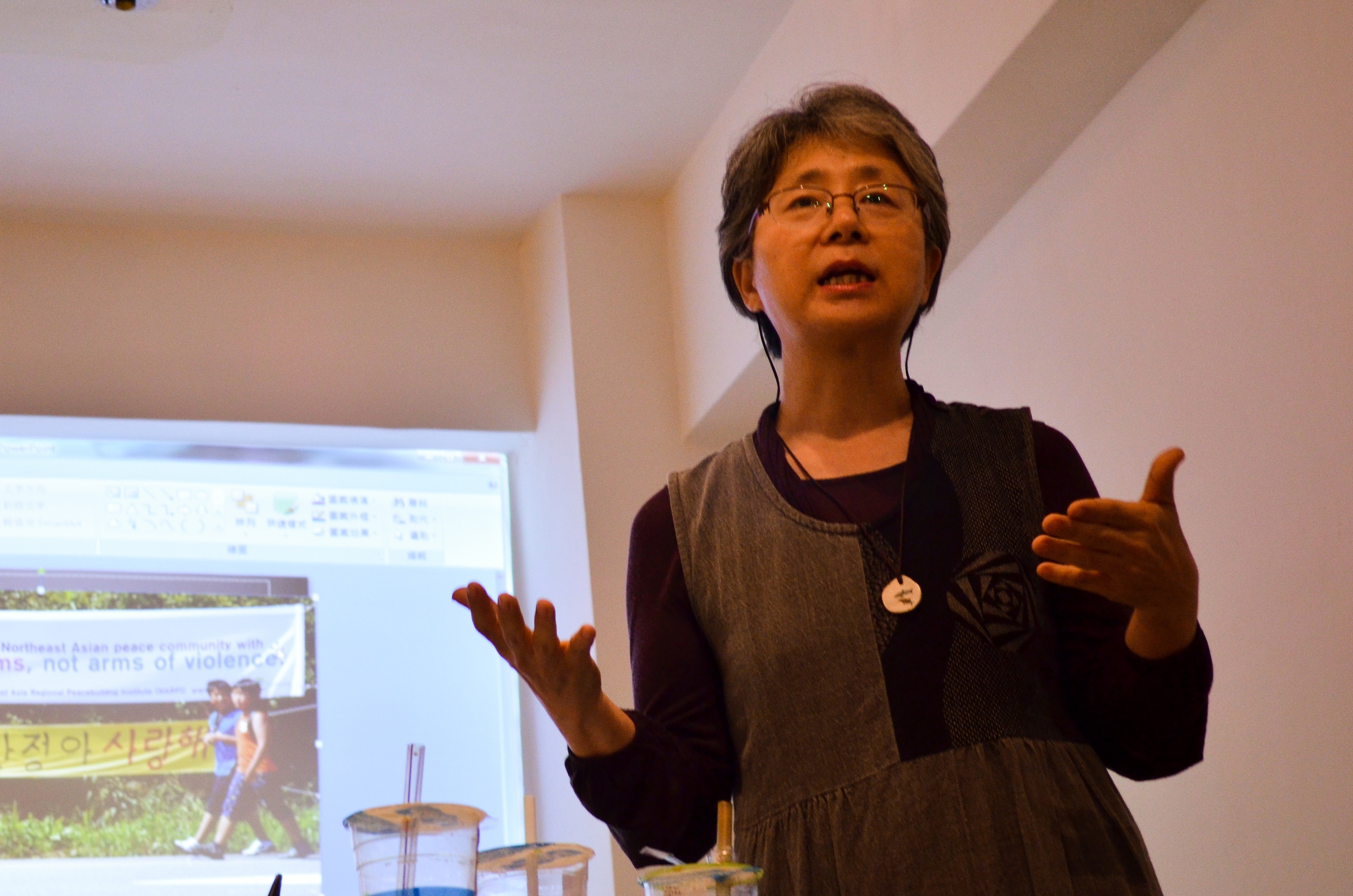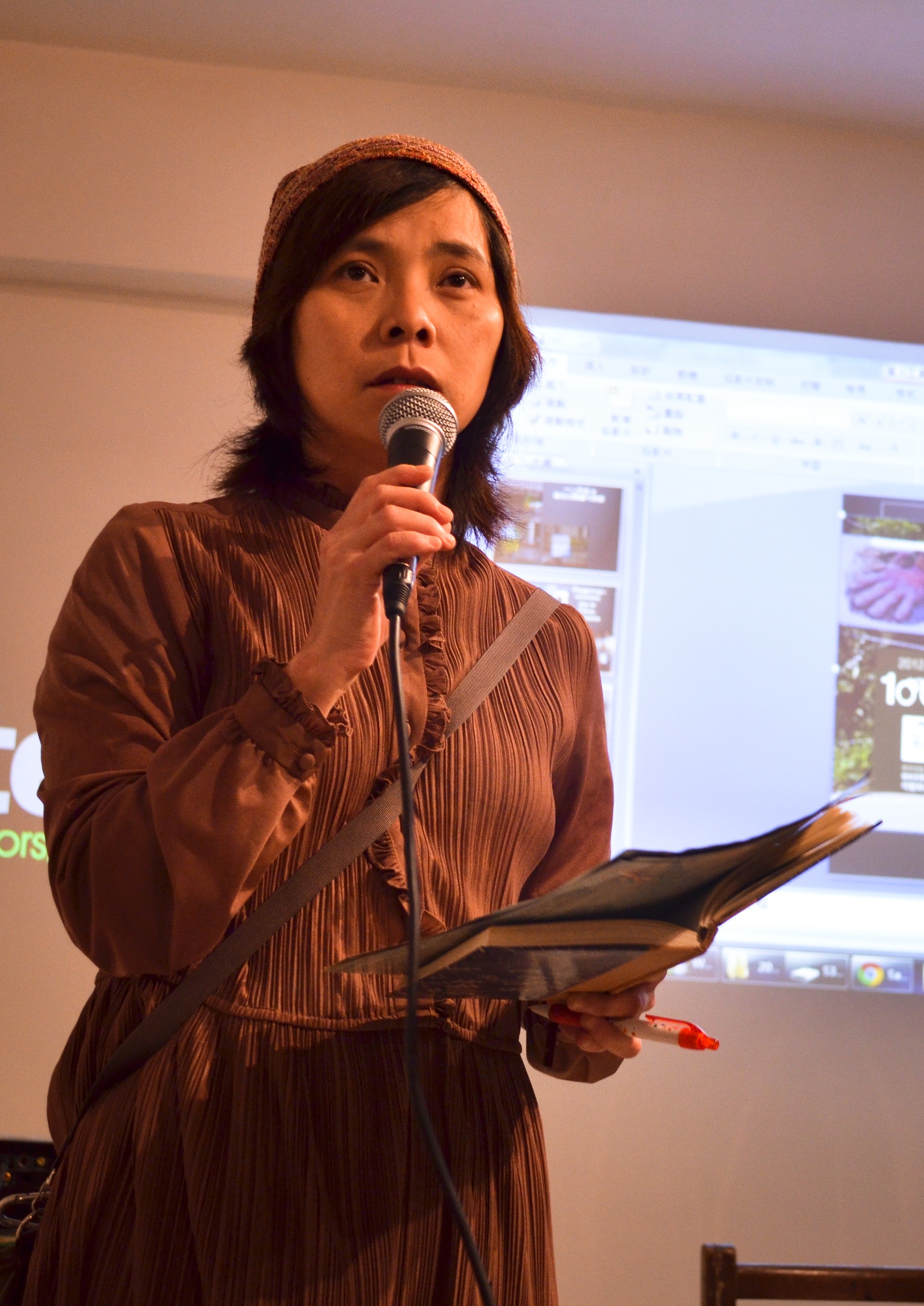從一種群島的精神地理及視野,從我們的島嶼望向他們的島嶼,思考我們共同面臨的問題—高俊宏
十九世紀末,台灣、沖繩與包含濟州島的韓國分別在日本帝國拓展過程中被納入其版圖而統治,不同的是沖繩變成日本的一縣,而台灣、韓國則成為日本的殖民地。戰後,美國接替了日本帝國在東亞殖民的勢力,台灣、沖繩與濟州島同樣納入了美國的冷戰防衛線,面臨了相同的命運。至今,佔日本國土僅0.6%的沖繩承載了在日美軍75%專用基地,而美軍長期以來在沖繩造成的訓練事故、刑事案件更不計其數;南韓則在2007年起,不惜破壞當地有益於農業的肥沃土壤與獨有的海洋生態環境,不顧在地民眾的反對,在濟州島江汀村興建海軍基地,隱然作為美軍21世紀東亞部署的一環。
就在釣魚台爭議再次進入東亞視野之際,就在中日美三國盤算著如何維護「大國」的利益,大肆進行軍事演習、擴增軍費支出,媒體追逐著擦槍走火的軍事緊張狂舞之時,發起反美軍/海軍基地建設抗爭行動已持續超過五六年歷史的東村高江聚落、濟州島江汀村,則雙雙面臨著強行動工的艱難局面。
沖繩高江聚落坐落於沖繩北部山原(やんばる)的中部,長年與佔地7800公頃的美軍「北部訓練場」毗鄰而居。1995年,因美軍強暴沖繩少女一案激發了超過十萬民眾群起抗爭,在反美基地情緒高漲之際,美日雙方協議《SACO合意》,以「促進基地整頓縮編」之名義企圖消弭沖繩縣民的憤怒,但實際上卻行基地再編制與再強化之實。《SACO合意》後,美方預計返還近一半的土地,而條件是在東村高江部落附近建設六個新的直升機停機坪,此停機坪離最近民宅處僅約400公尺。2006年2月,人口約160人的高江居民成立了「沖繩高江反直升機坪住民之會」,通過反對建設直升機坪的決議,要求相關部門重新評估該計劃。然而日本防衛局無視這些聲音,於2007年7月2日強行動工。之後,居民們犧牲日常生活,用漫長辛苦的和平靜坐方式來阻止基地建設,但他們的聲音幾乎沒有受到日本政府和媒體的重視。
而濟州島江汀村自2007年興建海軍基地起,由居民發起「反海軍基地運動」已有超過五年的歷史,「
沖繩、濟州島、台灣皆為東亞島國,
“We look to their islands as if we conceptually belonged to the same archipelago, as we contemplate on the common issues we face.” – Kao Jun-Honn
In the late 19th century, in the midst of Japan’s territorial expansion, the islands known as Taiwan, Japan’s Okinawa, and Korea’s Jeju Island were all taken under the rule of the Empire of Japan. The main difference between them was Okinawa later became a district of Japan, while Taiwan and Korea became Japanese colonies.
After World War II, the United States took Japan’s place as the dominating power of East Asia, and Taiwan, Okinawa and Jeju Island faced the similar fate of falling inside the “defense perimeter” of the United States during the Cold War. To this day, Okinawa, comprising of only 0.6% of Japan’s total landmass, is occupied by 75% of all the American military bases in Japan. Not to mention countless training accidents and criminal cases have been continually caused by U.S. personnel stationed in Okinawa for years.
In 2007, the U.S. military went against the opposition of South Korea residents and constructed a naval base in Gangjeong, a small village on Jeju Island. Gangjeong had the potential to become a strategic military spot in 21st century East Asia to The United States, having neglected the significant damage it will bring to the “good soil” beneficial to agriculture and the spectacularly beautiful yet fragile coral reef. Just as the Senkaku Island dispute flared up in East Asia once again, China, Japan and the United States were engrossed in how to protect the benefits of their countries. The countries conducted military exercises and boosted their military expenses, while the media frantically chased after the rising tension between nations. It was during this time of chaos and confusion, the U.S. military forcefully carried on the construction of the naval base, regardless of the opposing outcries in Gangjeong village that have been prevailing for nearly six years.
Takae village, located in the middle of the northern mountainous region of Okinawa, is neighbor to the U.S. military base “northern training center” that covers about 7800 hectares of land. In 1995, three U.S. servicemen raped a young Japanese girl, which then led to public outrage and over 100 thousand demonstrators who gathered to protest. In response to the rise of anti-base outrage, the United States and Japan launched the Special Action Committee on Okinawa (SACO) in hopes of appeasing Okinawa residents. However, the committee adjusted and enhanced the military bases instead of removing them. After the SACO, the United States were to return half of the land to Japan, under the condition that they could construct 6 new helicopter ramps near Takae Village. These ramps were only 400 meters away from the closest private residence.
In February 2006, residents of Takae, about 160 residents in total, established the Okinawa Takae Residents Anti-ramp Association. They hoped that by doing so, the government will reevaluate their plan. However, authorities were indifferent to their voices, and continued with the construction nonetheless on July 2, 2007. Residents have then attempted long enduring sit-down strikes in response to the construction of the base, but their sacrifices were in vain yet again.
In 2007, another naval base initiated its construction in the location of Gangjeong Village on Jeju Island. Anti-base movements have been in action for over 5 years, and these sounds of resistance further developed in to the “Jeju Demilitarized Peace Island Movement.” This has shed some new light on their pursuit of peace, and the focus on peace correlates with the island’s history. In retrospect, the South Korean Government christened the island “the Peace Island of the World” in 2005 for the painful history the island has witnessed in the past decades.
Okinawa, Jeju and Taiwan are all East-Asian islands, and they also play crucial roles in strives for peace in East Asia. Last September, just as social activists launched the International Action Week for No Jeju Naval Base, Taiwanese artist Kao Jun-Honn forged ahead discussion in Taiwan. Koa Jun-Honn, as well as the Gangjeong SOS organization, Taipei Contemporary Art Center and Dogpig Art Café joined together in holding a screening of the documentary of the Gangjeong Resistance and the panel on the issue. The aim is to raise awareness among the public of Taiwan on the adversities and challenges East-Asian islands are facing today.
Early this year, Taiwan Haibizi joined Gangjeong SOS in planning this dialogue at Taipei Contemporary Art Center. Through screening the documentary, inviting activists, who have long participated in the resistance in Okinawa and Jeju Island to share experiences and insights, they hope to not only raise awareness in Taiwan, but also to pave the way for the Demilitarized Peace Island Movements in Jeju, Okinawa and Taiwan.
交流會出席成員:
交流會:濟州島江汀村「非武裝和平之島」運動簡史+沖繩高江反美軍直升機坪建設運動簡述
與談者Speakers / 報告人Presenters:
Dr. Song Kang Ho (SOS 創辦人 Founder of SOS)
Cho JungRae (SOS成員 SOS member)
Kim Dong Won (SOS成員、江汀村良心犯 SOS member, former POC of Gangjeong)
Emily Wang (SOS 成員 SOS member)
台灣海筆子沖繩高江小組成員:
宮平杏奈、許雅紅
龔卓軍 Kung Cho Jun(南藝大創作理論研究所副教授)
主持人:高俊宏 Kuo Jun-Honn(藝術家)
現場翻譯 延光錫(交通大學社會與文化研究所博士班)
交流會流程:
7:00- 7:30 江汀村抗爭現場影片放映(中英) Documentary Screening (Chinese/English)
7:30-8:00 Brother Song,非武裝和平運動 Demilitarized Peace Movement
8:00- 8:30 金東元 韓文 江汀村抗爭簡史 Kim Dong Won: The History of Gangjeong (Korean)
8:30- 8:45休息時間 Break
8:45-9:00 Cho-Jung Rae
9:00- 9:15 Emily Wang
9:15-9:45宮平杏奈、許雅紅:台灣海筆子沖繩高江小組 Taiwan Haibizi
9:45-10:00 龔卓軍 Kung Cho Jun
9:45- 綜合討論(全體) Discussion
主持人:高俊宏 Kuo Jun-Honn
參考資料:
沖繩高江相關網站:
やんばる東村 高江の現状 http://takae.ti-da.net/
活動記錄:
文字 text:陳睎 Zaid Chen
攝影 photo:張巧怡 Joy Chang
翻譯 translator :周思婷 Christine Chou
三月七日由台北當代藝術中心(以下簡稱TCAC)、台灣海筆子沖繩高江小組、藝術家高俊宏與濟州島江汀村SOS組織於TCAC共同舉辦的「台灣、沖繩、濟州島 非武裝和平之島交流會」,延續去年九月由藝術家高俊宏發起、偕同江汀村SOS組織、台北當代藝術中心及豆皮文藝咖啡館共同舉辦的江汀抗爭紀錄片以及說明會,並與台灣海筆子高江小組串聯,期望能透過民間與藝文界的交流來展開東亞和平可能性的對話,並思考戰後美軍基地在東亞的諸多現象。
高俊宏在座談會中表示,去年前往江汀村時看到村民與和平運動者的生活,都在落實反海軍基地的活動上;而在沖繩的高江的反美軍基地活動也有同樣的狀況,在台灣幾乎沒有看過這麼長時間的抗爭,而他在會中更談到一位日裔的韓國藝術大學教授所提出的東亞小三角的概念,即為濟州島、沖繩與台灣;這三個地點都曾經受過日本殖民,而濟州島之於韓國和台灣之於中國、沖繩之於日本都有相當程度上的類似,從歷史的淵源來理解其實彼此之間有相當的關連性。SOS成員Kim Dong Won在與會中表示濟州島周圍擁有許多瀕臨絕種、美麗的生物,生態與環境相當受到國內外的環保與生態團體重視。然而在海軍基地的工程開始之後,當地的農產品開始受到影響,甚至因兩次颱風過境所造成工程傷害的殘留物,也嚴重影響當地的海洋生態;而海軍基地的駐紮處位於濟州島上的火山岩岸平台,是村民們時常前往休憩、放鬆的地方,甚至給予信仰,對當地居民是一個相當重要的地方。工程開始之後,居民遍試著阻礙工程的進行,並且對遊客、施工人員甚至海軍進行宣導。這些和平運動包含著在工程範圍裡散步,在工地的門口祭拜,在工地內祈禱。有些人為了聲援,也舉辦了演講與座談會,或是運送物資到江汀村給予當地居民。而現在警察也開始介入,將和平運動者以妨礙公務的罪嫌逮捕。Kim認為這背後的意義不只是濟州島江汀村的事件,而是美軍在東北亞的軍事部署的計畫。除了Kim提到的和平運動之外,與會來賓SOS組織成員及現場翻譯Emily也提到,支持濟州島江丁村的作家、藝術家以及手工藝家們在海軍基地的工程區域中頻繁的活動,甚至有居民結婚典禮也在海軍基地,已經被居民與和平運動家當成是和平藝術公園,被居民以頻繁使用的方式占領。
另一方面。沖繩高江聚落坐落於沖繩北部山原的中部,長年與佔地7800公頃的美軍「北部訓練場」毗鄰而居。海筆子沖繩高江小組的成員許雅紅在會中報告,沖繩戰後史其實就是沖繩人民的抗爭史。韓戰爆發之時,美國意識到危機而簽訂美日安保條約佔領沖繩,美軍基地把農田圍起來、強迫農民來蓋沖繩海軍基地。1972年,越戰爆發,沖繩返回日本,但日本的美軍基地百分之七十五都移到了沖繩;1995年,因美軍強暴沖繩少女一案激發了超過十萬民眾群起抗爭,在反美基地情緒高漲之際,美日雙方協議《SACO合意》,以「促進基地整頓縮編」之名義企圖消弭沖繩縣民的憤怒,但實際上卻行基地再編制與再強化之實。《SACO合意》後,美方預計返還近一半的土地,而條件是在東村高江部落附近建設六個新的直升機停機坪,此停機坪離最近民宅處僅約400公尺。2006年2月,人口約160人的高江居民成立了「沖繩高江反直升機坪住民之會」,通過反對建設直升機坪的決議,要求相關部門重新評估該計劃。然而日本防衛局無視這些聲音,於2007年7月2日強行動工。之後,居民們犧牲日常生活,用漫長辛苦的和平靜坐方式來阻止基地建設,但他們的聲音幾乎沒有受到日本政府和媒體的重視。她認為,美軍基地在許多東亞國家都有駐紮,儘管台灣目前沒有,但其實它的影子依然在一些台灣人的心中,而她希望能將沖繩高將放在心中,並與心中的海軍基地做比較,進行與美軍的抗衡。而之後海筆子高江小組也會進行一連串的座談、紀錄片播映會以及說明會,期望能獲得台灣與沖繩在地人們的注意。
SOS組織創辦者Dr. Song Kang Ho 在會中指出,島容易因為外來勢力或者國內公權力,而使其權力遭受剝奪卻難以獲得關注跟重視,除了濟州島,國際上也有許多被軍事化的島嶼,如沖繩、夏威夷的歐胡島、關島、菲律賓呂宋島上的蘇比克。這些島嶼的軍事化過程幾乎都是無視民主的程序,島民的權益遭受剝奪,島上的傳統文化財與生態環境也遭受破壞。在國際上,美國欲顧存其在西太平洋之霸權,而已經崛起的中國也為其符合成長的國力以及隨之而來對國際社會上的政治要求也開始蠢蠢欲動。目前濟州島與歐胡島和沖繩島民的和平活動家漸漸地互相連結,希望能維護自身的權益。其中,和平島嶼之間的提議有除了防止島嶼的軍事化以外,更有自治、講求中立以及非武裝(撤廢軍事基地、禁止軍艦停泊、軍用機停留、以服和平役代替服軍役、撤廢國防稅)的概念。
濟州島相關紀事:
1948年 43事件爆發, 3萬島民死亡
1947年 31獨立運動的活動在混亂中有8位青年遭政府擊斃,該次事件變成四三事件爆發的契機
1948年 韓國南北各自成立自己的政府,剛促成的南韓政府將反對南韓政府的勢力視為共產主義者
2002年 濟州島和順港被選定為海軍基地 居民反對
2002年 江汀村被聯合國國際教科文組織定為生育圈保護地區
2004年 江汀村被韓國只到為絕對保護地區
2005年 南韓總統盧武鉉宣布濟州島為和平之島,南韓政府承認對濟州島的暴力 並且將濟州島稱為和平之島
2005年 濟州島唯美港選定為海軍基地 居民反對
2007年 教科文組織登錄濟州島為世界遺產
2007年 江汀前村長違反公開宣傳的義務,發出傳票召開會議,該會議只有八十七人出席,八十七人以「拍手」通過「海軍軍港建設的請願書」提議案。其他村民至此皆被蒙在鼓裡,直到他們從電視新聞上得知自己的村莊即將成為海軍基地,憤怒的村民罷免前任村長,並再次召開投票,儘管海軍試圖勸阻江汀村居民前往投票,仍有共七百二十五位居民參與投票,且九十四%的村民投反對票。

